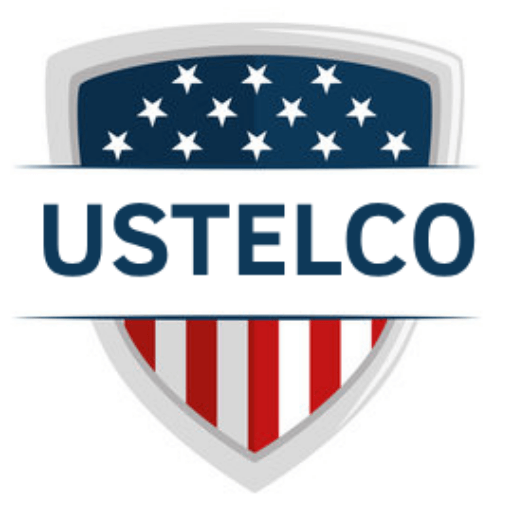The Emergence of Synthetic Identity in Voice Networks
The contemporary voice communication environment is increasingly characterized by adversarial actors weaponizing synthetic audio and spoofed signaling to exploit vulnerabilities in trust-based signaling protocols. These sophisticated threats transcend the historical spoofing of numerical identifiers by integrating real-time AI-driven speech synthesis and caller ID manipulation within the STIR/SHAKEN attestation framework. The outcome is systemic deception, enabling bad actors to impersonate regulatory authorities, healthcare agents, or financial institutions with disturbing fidelity.
USTelco’s AI Defender redefines the response paradigm. Rather than operating as a reactive filter, it functions as an embedded verification engine at the packet layer, merging biometric authentication, signal forensics, and regulatory metadata into a real-time infrastructure defense system. Built to ensure sovereign-grade authentication with sub-100ms inference latency, AI Defender reconstitutes trust within SIP-based voice ecosystems.
Synthetic Voice Attacks as a Transnational Threat Vector
Quantitative data from Hiya’s 2024 State of the Call study reveals that 28% of global voice traffic in 2023 exhibited characteristics of fraudulent or spam-related behavior. Furthermore, 16% of U.S. consumers directly reported monetary loss, attributing culpability to impersonation attacks. In 2025, Axios and The420.in chronicled the proliferation of AI-enhanced impersonation platforms, citing increased adversarial capabilities to replicate regional dialects, emotional tonality, and semantic cues in real time.
This evolution of threat vectors invalidates traditional defenses, as STIR/SHAKEN attestation mechanisms were never designed to verify the authenticity of the human voice stream, only the numeric identity embedded in SIP headers.
STIR/SHAKEN’s Structural Limitations
While STIR/SHAKEN remains foundational to signaling-layer integrity, it suffers from three primary deficiencies in the era of AI-driven voice fraud:
- Absence of Voice Authentication: The framework lacks the capacity to verify that the speaker is the rightful user of the number.
- No Temporal Correlation: STIR/SHAKEN cannot link behavioral patterns across calls utilizing distinct identifiers.
- Blindness to Deepfake Constructs: The framework assumes human-originated speech without validating speech integrity.
USTelco’s AI Defender resolves these limitations through an integrated system of biometric extraction, GAN-resistant analysis, and federated threat mapping.
AI Defender: Multilayered Verification Architecture
Voice biometrics form a non-replicable identity layer. USTelco’s approach captures the speech signal not merely as audio, but as a constellation of anatomical and neuro-muscular markers unique to each speaker.
Signal Intelligence Pipeline:
- Biometric Feature Extraction: Real-time RTP/SRTP streams are analyzed using Mel-Frequency Cepstral Coefficients (MFCCs), Linear Predictive Coding (LPC), and log-mel spectrograms.
- Speaker Embedding & Modeling: Time Delay Neural Networks (TDNN) produce x-vector-based embeddings for voiceprint synthesis.
- GAN Discriminator Analysis: Synthetic speech is identified via adversarial learning models tuned to detect pitch modulation, cadence anomalies, and harmonic discontinuities.
- Cross-Session Identity Graphing: Biometric signatures persist across disparate SIP identifiers and infrastructure boundaries.
- Forensic Fusion with Metadata: STIR/SHAKEN attestations, routing paths, and call tracebacks are cross-referenced with biometric matches.
Inline Execution and Infrastructure-Scale Deployment
AI Defender operates natively at the media processing layer with a sub-100ms processing latency, enabling real-time verification without introducing jitter, packet loss, or quality degradation. MOS-aware adaptive routing ensures compliance with SLA requirements across high-throughput telecom environments.
Platform Compatibility:
- SIP-enabled UCaaS/CPaaS fabrics
- Federated SBC and trunking ecosystems
- Government-grade encrypted media sessions
- Financial and regulatory-grade VoIP deployments
Policy-Convergent Compliance and Audit Fidelity
USTelco is not merely a participant in the regulatory ecosystem, we help architect it. Our compliance infrastructure includes:
- FCC Filer ID: 837557 | FRN: 0036846699
- International Section 214 License: ITC-214-20250401-00035
- EAR and OFAC adherence for encrypted telecommunications systems
All biometric and trace log data is:
- Immutable via blockchain chaining and cryptographic notarization
- Auditable in real time by regulators and law enforcement
- Federated across jurisdictions with privacy-preserving data partitioning
Strategic Differentiation in Anti-Fraud Defense
Core Modules of USTelco’s Defense Stack:
- STIR/SHAKEN Layer: Protocol-level call source verification
- Voice Biometric Layer: Real-time speaker identity resolution
- ML-Based Deepfake Detection: Adversarial voice model resistance
- Federated Graph Database: Multi-carrier cross-correlation of threat identities
Tangible Outcomes:
- Unmasks synthetic voice within live call flow
- Enables actionable traceback of international threat actors
- Maintains CLI and trust framework compliance
- Systematically disables repeat behavioral fraud across entry points
Conclusion: Reestablishing Veracity in Voice
USTelco’s AI Defender does not merely enhance security, it restores credibility to voice as a trusted medium. By integrating biometric analysis and policy-enforced trust at the infrastructure layer, USTelco establishes a telecom perimeter where voice identity becomes mathematically and behaviorally authenticated.
“Voice verification is no longer a subjective judgment, it is a forensic science.”
Telecom stakeholders who rely exclusively on signaling metadata or behavioral anomaly alerts are vulnerable. USTelco offers a hardened path forward, where each call is both authorized and human-authenticated.
Primary Literature and Technical References
- Hiya (2024). State of the Call. https://www.hiya.com/state-of-the-call
- Axios (2025). AI Voice-Cloning Scams. https://www.axios.com/2025/03/15/ai-voice-cloning-consumer-scams
- The420.in (2025). Voice Cloning Scams on the Rise. https://the420.in/voice-that-tricks-ai-powered-voice-cloning-scams-on-the-rise-2025
- Phonexia (2024). Voice Biometrics Essential Guide. https://www.phonexia.com/knowledge-base/voice-biometrics-essential-guide
- Reddit VOIP Community (2023). STIR/SHAKEN Discourse. https://www.reddit.com/r/VOIP/comments/13eoezc/is_stirshaken_an_abysmal_failure
USTelco: Rebuilding trust in voice, one authenticated call at a time.




